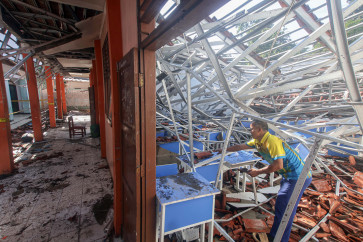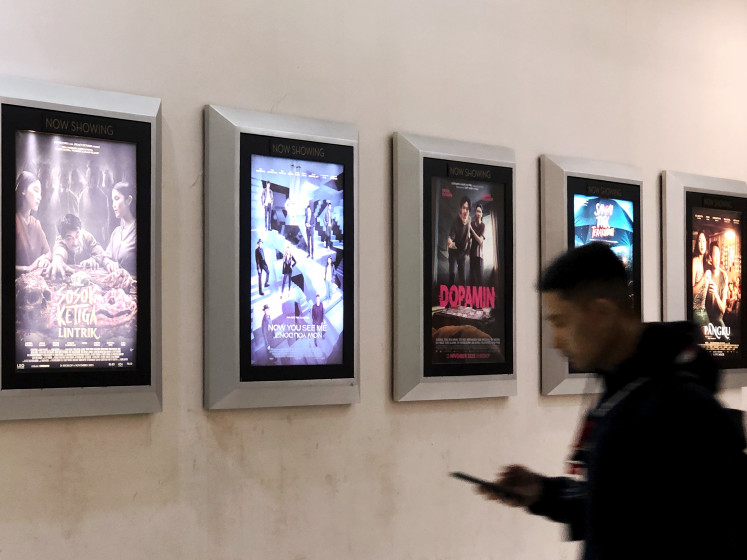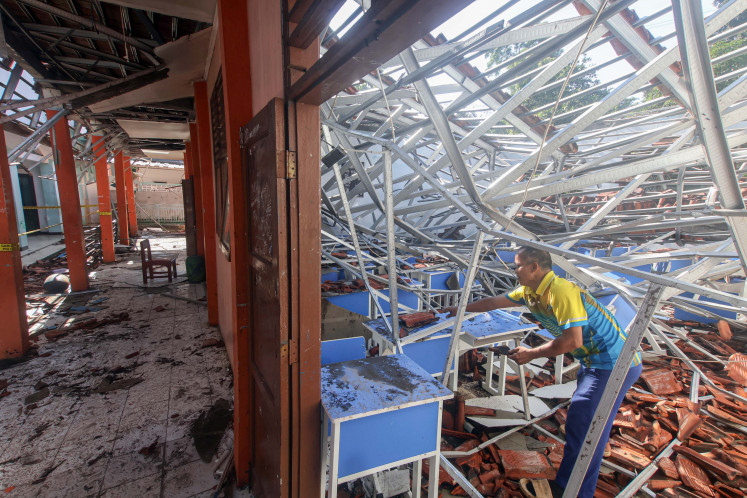Popular Reads
Top Results
Can't find what you're looking for?
View all search resultsPopular Reads
Top Results
Can't find what you're looking for?
View all search resultsGreat Escape to Old Korea
Get into the feel: More than 270 traditional Korean structures have been relocated at the one location
Change text size
Gift Premium Articles
to Anyone
Get into the feel: More than 270 traditional Korean structures have been relocated at the one location.
Hundreds of traditional houses silently retell old stories from the last empire in Korea.
When you are in the Korean Folk Village (Min Sok Chon) and feel like you have travelled back to the past, it is because most of the structures there are from an earlier era.
More than 270 traditional houses from the Joseon Dynasty, a reign that existed between the 1400s and the 1800s, were relocated from different places into the 245 acre site, according to an official tourist booklet.
Located in Yongin in the province of Gyeonggi, the Korean Folk Village is dubbed a living museum. One thing that is obviously different from the dynasty era is that thousands flock to the area with dozens of buses lining up neatly at the parking lot. The village was founded in 1974 and has since become a popular tourist destination in the country.
Yongin is a satellite city of Seoul with a close proximity to the capital, making the area a great option for tourists who want to escape from the modernity of the metropolitan area and get a firsthand feel of Korean lifestyles from a bygone period. There are several transportation options available from downtown Seoul, including trains and various bus services.
It was a warm early summer. The crowded area is quite dusty since most of the area is unpaved dirt.
Some looked a little disturbed but most of the tourists flocking to the area seemed just too busy enjoying demonstrations on embroidery, weaving, clay crafting and woodworking. At some spots, visitors are invited to join in different workshops by artisans such as coloring ceramics and pottery making.
By the entrance are ancient totem poles with Chinese characters. During the olden times, the Koreans built and worshipped such poles as their guardian deity to protect them from evil spirits. Totem poles were also traditionally placed at the edges of villages to mark village boundaries and scare away demons.
The traditional houses scattered across the massive village are said to represent different regions and social classes.
It may demand a closer look to note the differences in layout and design, especially if you are too lazy to read the descriptions (available in English) on sign posts put up on almost every structure.
Apart from private residences, there are other buildings that offer a window into life during the Joseon time, such as gwana (provincial government office), seowon and seodang (the educational institutions), hanyakbang (the medical institution), Buddhist temples and seonangdang (the religious buildings) and the fortune-teller’s place.
Although most of the buildings are presented as authentic, it is apparent that many of the ornaments and pieces of furniture inside are replicas. Some of the farming tools, for example, are restored from the historical era. They are all useful to help visitors encounter and understand how Koreans lived in the past.
There are human and animal dummies inside different buildings but some of the houses have real people wearing traditional Korean outfits doing what ancient Koreans did in their daily lives. The activities are various, based on the type of building they are in.
The show begins: Visitors flock to a small amphitheater to enjoy a farmer’s dance.
In the farmer’s house, for example, there was a woman who seemed to be a peasant making a hand woven cover for huge jars. Such jars are usually used for kimchi fermentation and storage. But small rope fences are put up to prevent visitors from getting to close to them.
To add flavor to the old village scene, there are also traditional farming areas that grow real plants, which mostly look like herbs, and horses that visitors can ride.
“I absolutely love the trees. They make me feel like I’ve travelled back in time,” said Edi, a visitor from Indonesia.
Visitors were greeted by a couple of smiling youths in traditional Korean attire who were wandering around the site.
If you are lucky, you will also catch people wearing other traditional costumes. They are said to be characters from the late Joseon Dynasty, such as Sato (the governors), Daejanggeum (a royal cook in the palace), Kumiho (a legendary fox with nine tails) and Geosang (a business magnate in Joseon dynasty).
Right in the center of the site is a performance area where dozens of young performers danced to some folk music. The arena can accommodate up to 500 spectators. Different types of performing arts and other traditional events are showcased daily, according to the Korean Folk Village’s official website.
Traditional Korean wedding ceremonies are also regularly reenacted, but unfortunately not on the day I visited.
The Korean Folk Village is so large that one may want to spend the whole day there to get the most out of it. As it takes a lot of walking, using comfortable footwear is recommended.
On the other side of the river is a mini theme park suitable for children who may find it more interesting than the history of the site. A number of rides are available such as rollercoasters and bumper cars, merry-go-rounds.
There is a vibrant street market, also known as Jumak, so visitors can enjoy various Korean food offerings. The dishes are prepared in an authentic Korean home style. There are also stalls selling handicraft items for souvenirs, many of which are made on the premises.
There is also a museum and a pottery exhibition hall where cultural artifacts from the historical Joseon period are put on display.
The Korean Folk Village is also renowned as a major shooting location for many popular TV dramas and movies. Jewel in the Palace (2003), Sungkyungwan Scandal (2010), The Moon That Embraces the Sun (2012), A Man From Another Star (2014) are just some of them.
These films introduce traditional Korean architecture to the international audience and also entice K-drama and K-film lovers to visit the country.
— Photos by JP/Bagus BT Saragih











